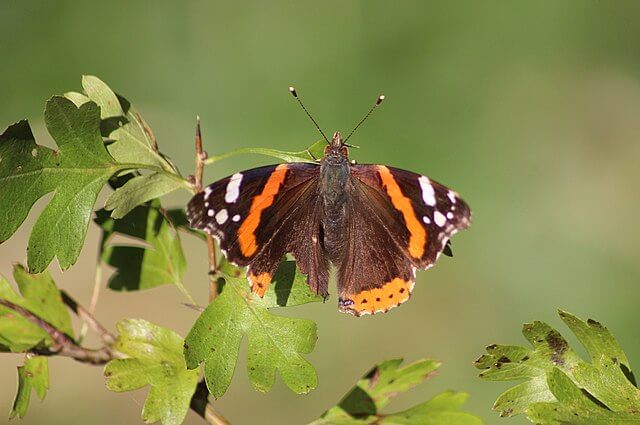
Climate change has triggered a remarkable behavioural shift in migratory butterflies, as a species that traditionally departed for Europe and Africa during winter is now increasingly opting to remain in the UK, according to experts.
In July, a butterfly count conducted by a charitable organisation revealed a staggering four-fold surge in sightings of the striking red admiral butterfly, continuing a noteworthy long-term trend. Compared to the same period in the previous year, sightings soared by over 175,000.
Butterfly Conservation unequivocally attributes this surge to the influence of climate change. The red admiral, renowned for its distinctive dark brown body, red stripes, and white patches, is a familiar sight in British and Irish gardens. However, it is, in fact, a migrant species originating from continental Europe and North Africa. Typically, it journeys northward to the UK each spring and summer, where females lay their eggs.
It now appears that a significantly larger number of these butterflies are opting to spend the winter months in southern England, leading to the spike in sightings this year.
The Big Butterfly Count, spanning from July 14th to August 2nd, reported a remarkable 400% increase in red admiral sightings. This ongoing count, set to conclude on August 6th, continues to observe and analyse the distribution of red admirals throughout the UK.
Thus far, the count, which relies on online reports from butterfly enthusiasts, has documented a total of 177,000 red admiral sightings. Butterfly Conservation, an organisation dedicated to reversing the decline of endangered species, posits that as global temperatures rise, the imperative for red admirals to return to continental Europe and Africa diminishes. It is becoming increasingly possible that a greater number of these butterflies will choose to overwinter in the UK.
Dr Zoe Randle, senior surveys officer at the charity, said: “We’ve been surprised to see the red admiral taking the lead; however, with the increased frequency of warm weather, the UK may well become a permanent home for this species…
“With climate change here to stay, we need people to take part more than ever before and help us understand how extreme weather is affecting our butterflies.”
In total, the Big Butterfly Count this year has collated over one million butterfly sightings from nearly 65,000 participants, painting a vivid picture of the evolving dynamics of butterfly migration in response to a changing climate.
——————————————————————————
At Natural World Fund, we are passionate about stopping the decline in our wildlife.
The decline in our wildlife is shocking and frightening. Without much more support, many of the animals we know and love will continue in their decline towards extinction.
When you help to restore a patch of degraded land through rewilding to forests, meadows, or wetlands, you have a massive impact on the biodiversity at a local level. You give animals a home and food that they otherwise would not have had, and it has a positive snowball effect on the food chain.
We are convinced that this is much better for the UK than growing lots of fast-growing coniferous trees, solely to remove carbon, that don’t actually help our animals to thrive.
This is why we stand for restoring nature in the UK through responsible rewilding. For us, it is the right thing to do. Let’s do what’s right for nature!
Donate today at https://naturalworldfund.com/ and join in the solution!

